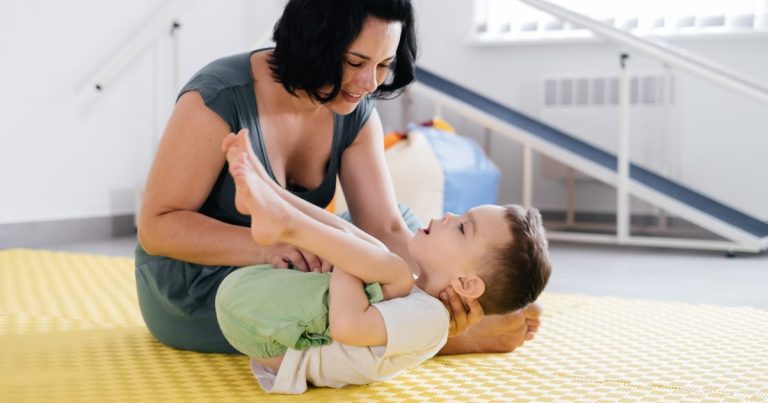If your child has access to NDIS funding then you may be able to request funding for specialist AFO shoes from your core supports funding budget. There are a few different types of specialist shoes for AFO’s on the market. Popular brands include Billy shoes and Nike. These shoes tend to have zips that go all the way around the foot so you can easily place the foot inside the shoe. They are great for easy access, but it can be difficult to get funding for multiple pairs and often there’s a long wait for the shoes to be delivered. Even if your child has specialist shoes for orthotics, it’s worth looking at the below tips, so you can get some other shoes that also work with AFOs.
Ready Steady Therapy’s tips for AFO shoe buying:
- Runners or high tops are the best for AFOs and insole orthotics. They commonly have more room inside the shoe to accommodate the splint and also have a deeper heel which stops the orthotics coming out of the shoe. Most runners have a slight heel height, which usually works well with the AFO. However, sometimes your orthotist or physiotherapist would like to have a bit higher heel height than usual. Hence, do check with your Physiotherapist when your orthotic appointment is coming up soon.
- The sole of the shoe should go slightly up at the toes, this helps with rocking over the foot and pushing off, generating more power for stepping.
- The heel of the shoe should not be floppy, if you can squeeze it together then it’s not right. You need a shoe that gives firm control as this will provide stability to the foot/ankle.
- The tongue of the shoe should be able to be opened down near the toes, this means the tongue can be easily pulled out allowing you to slide the foot with AFO on easily inside the shoe. Remember if you buy a runner with shoe laces, make sure the shoelaces go as close to the toes of the shoe as possible, not just half way. In this way, you can easily take the tongue out easily.
- An insole that can be removed is best as you have more room to accommodate the AFO or foot insole orthotic if needed.
- Shoes that are easy to fasten and loosen so taking them on and off isn’t too difficult. Shoes with shoelaces or velcro are the best, and they allow you to get firm control of the foot.
- Shoes that have zip openings at the side can make getting the AFO in and out of the shoe easier. These can be trickier to find for older children.
- Be prepared that you may need to buy shoes of a full size bigger to accommodate the AFO. If you need to go 2 sizes bigger to just get the AFO inside the shoe, then the shoes might not be right. If the shoes are too big then balance can be affected and your child may trip over the longer shoes.
- If you can’t go with your child to the shops and they don’t need their AFO on when you go shopping, take the splint with you. That way you can put the splint in and out of the shoes to see how easily they fit. Just remember that when the AFO is on your child’s foot it may be a little bulkier than without. Ensure you keep the receipt so you can take them back if they don’t fit.
We hope this blog has helped you find shoes more easily for your child. If you have any good places to buy shoes for AFOs please let us know, we love to hear of new shoes or stores that are selling shoes that accommodate AFOs. As always please contact your child’s Physiotherapist first to ensure a particular shoe is not required for your child.
Good luck and happy shopping!






